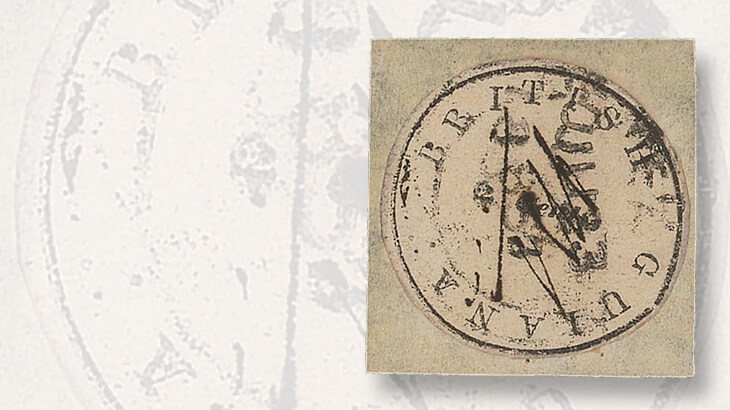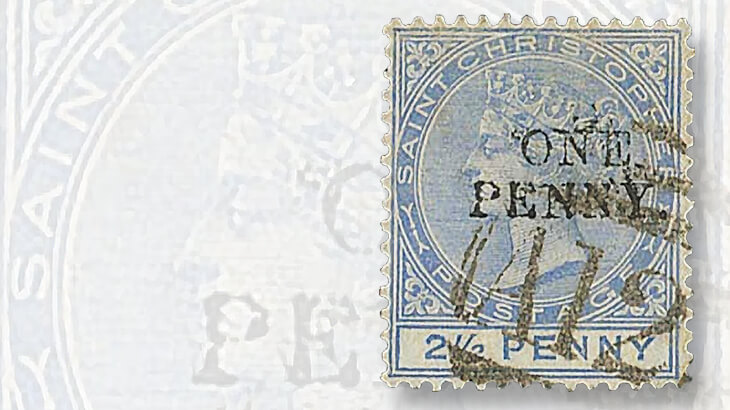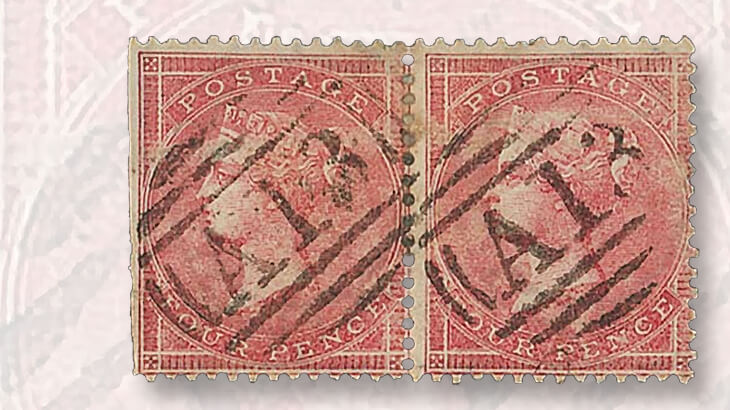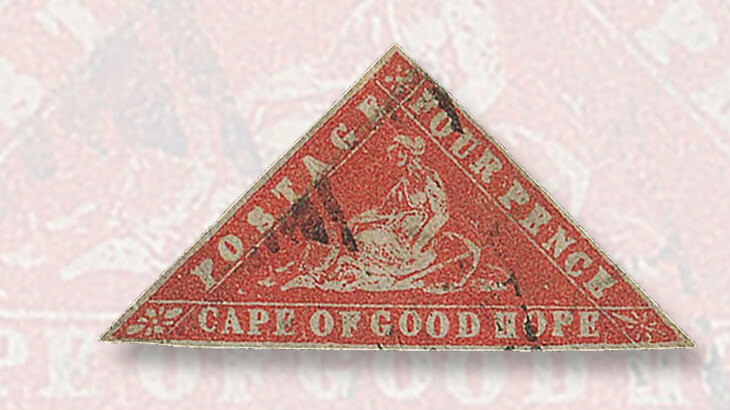Auctions
British Guiana collection sold by Spink includes $265,000 ‘Cottonreel’ stamp
Auction Roundup — Matthew Healey, New York Correspondent
The former British Empire remains one of the most popular collecting areas around the world, including here in the United States.
Probably more than any other realm, Great Britain’s dominions, colonies, territories, and dependencies offer an amazingly rich and varied philatelic legacy.
From philately’s infancy, certain British Empire issues stretched the notion of what a postage stamp should look like.
Connect with Linn’s Stamp News:
Sign up for our newsletter
Like us on Facebook
Follow us on Twitter
Others encapsulated moments in history and the grand sweep of human endeavor in the most intimate way, by enabling personal communication over thousands of miles.
As if to illustrate this point, Spink offered several sales at its headquarters in London in late January, beginning with David Pitts’ collection of British Guiana and several British Caribbean colonies on Jan. 24.
Pitts, an American collector who has had a notable career in health care management, is a fellow of the Royal Philatelic Society London. His British Empire collection, which eschews mint stamps to focus on postally used, is being offered by Spink in several sales through January 2018.
British Guiana is famous for Demerara sugar, rum, and several of the world’s rarest postage stamps.
Among the earliest of these commodities were the colony’s first stamps, a set produced locally in 1850-51 in an improvised fashion, using loose type set in a rough circle made from a bent piece of brass printer’s rule.
Popularly known as the “Cottonreels” because they resemble the round labels on the end of a spool of thread more than conventional postage stamps, they were printed in black on various colored papers at a local print shop in the colonial capital, Georgetown.
The stamps’ denominations — 2¢, 4¢, 8¢ or 12¢ — are set in the middle, while the letters of the colony’s name curve, higgledy-piggledy, around the circle.
In a bid to discourage fraud, postal workers initialed each stamp in pen. Most of the stamps appear to have been cut out to their round shape before being sold.
The lowest denomination is also the rarest, with perhaps 10 examples known of the 2¢ on pale rose (Scott 1). Only four remain in private hands.
The provenance of the Pitts example is well-documented, going back to its first sale in 1877. It was auctioned in 1924 for some $3,172 as part of the great Ferrary collection, and traded hands privately a few times over the ensuing decades.
It was again offered at auction at the Washington 2006 international stamp show, where it sold for $365,500.
At the Spink sale January 24, it fetched somewhat less, being hammered down for £180,000, or around $265,000 with the 20 percent buyer’s premium that Spink adds to all lots.
A scarce stamp from the small island of St. Christopher shows a “ONE PENNY” surcharge on the 2½-penny Queen Victoria definitive of the time.
In error, one sheet of stamps missed getting the hand-applied rule through the original value (Scott 23). The used example offered by Spink, with a neat “A12” barred-numeral cancel of the colony, sold for $14,000.
The sale included numerous colonial forerunners, or regular British stamps used in the colonial post offices and distinguishable by the particular numeral cancels assigned to those colonies.
These are listed in the Scott Classic Specialized Catalogue of Stamps and Covers 1840-1940 with “A” prefixes, before the individual colonies’ own stamps.
A fine horizontal pair of Great Britain’s 4-penny rose of 1857, with superb, mostly complete “A13” cancels of Tortola (Virgin Islands Scott A4) was described as a “possibly unique multiple” of this forerunner. The pair, with some trivial faults, went for $8,800.
Pitts’ Bermuda exhibit is the only one of that country to have won an international large gold medal. Spink will offer it April 19.
Also on Jan. 24, Spink offered the Robert Van Buren Emmons collection of British Empire classics, with stamps and postal history from philately’s first three or four decades.
From the beginning, stamp-producing countries toyed with shapes other than rectangular. The first issues from Cape of Good Hope, a South African colony, are famous for their distinctive triangular shape.
After the initial printings from Britain were exhausted, a local firm reprinted the stamps, using typographed reproductions of the engraved originals.
These crude versions, issued in 1861, are referred to by collectors somewhat inaccurately as the “woodblock” issue.
Somehow, one cliche from each plate of the 1-penny and 4d stamps got switched, resulting in a color error for each denomination. The Emmons collection included both the 1d mistakenly printed in milky blue (Scott 7c) and the 4d mistakenly printed in vermilion (9f).
The errors, both remarkably lightly canceled and clearly showing the wording of denomination, sold for $15,450 and $25,000, respectively.
The sale continued with British Empire stamps from other consignors.
The first stamp of India — indeed, of all Asia — was a round ½-anna stamp, embossed first on paper and then on a waxy red wafer, resembling a seal.
Known as the Scinde Dawk, the stamp was issued in 1852 for the system of dawk (or dak) postal runners in the area now known as Sindh, Pakistan.
A very well-preserved red Scinde Dawk stamp (India Scott A3), attached to a large piece, was offered by Spink for the second time in four years.
In 2013, Linn’s reported that it had sold for $35,300; this time around, it fetched $39,800.
A rare imperforate horizontally error of Southern Rhodesia’s 3d Victoria Falls stamp of 1932 (Scott 32a), in a block of four, fetched $28,000.
MORE RELATED ARTICLES
Headlines
-
US Stamps
Oct 7, 2024, 3 PMMcMurtrie dismissed as APS education director following Sept. 21 arrest
-
US Stamps
Oct 7, 2024, 12 PMVasiliauskas named president of Mystic Stamp Co.
-
US Stamps
Oct 6, 2024, 5 PMApgar souvenir card available
-
US Stamps
Oct 6, 2024, 4 PMFirst Continental Congress and U.N. stamps receive Scott catalog numbers













